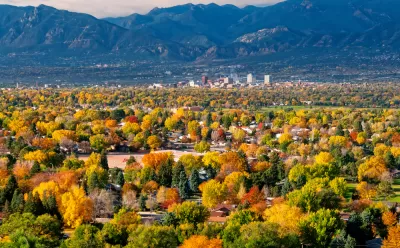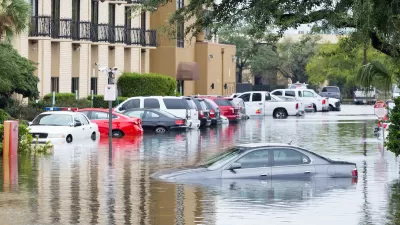New development in small Colorado towns threatens to overwhelm fire evacuation resources, raising alarm among local residents.

As populations in Western towns grow, development increasingly encroaches on fire-prone areas—and this has residents in one small Colorado community worried, write Shannon Najmabadi and Olivia Prentzel. The unincorporated town of Conifer, population 8,000, exemplifies the issues faced by communities at the periphery of urbanized areas where new developments threaten to overwhelm local water supplies, evacuation routes, and other fire suppression resources.
Between 1990 and 2010, the number of housing units in the wildland urban interface in Colorado increased 74% and more than 40% of the state’s housing units were nestled there in 2010, according to a report from the nonprofit Community Wildfire Planning Center. The acreage of the interface is projected to grow 300% by 2030 compared with 2000, according to a Colorado State University analysis.
Peter Dunbar, a former police chief experienced in fire evacuations, called the plan to add 188 new housing units to Conifer, where just one road leads out of town, a "recipe for disaster."
Residents of other Colorado towns echo these concerns, calling on their cities to include evacuation times in development permits and take steps to ensure safe evacuations in communities with limited exit routes, rough terrain, and scarce water supplies. Even as developers continue to build denser housing in zones with high fire risk, Western wildfires have grown more intense than ever and 'fire weather' days grow more and more common.

Alabama: Trump Terminates Settlements for Black Communities Harmed By Raw Sewage
Trump deemed the landmark civil rights agreement “illegal DEI and environmental justice policy.”

Study: Maui’s Plan to Convert Vacation Rentals to Long-Term Housing Could Cause Nearly $1 Billion Economic Loss
The plan would reduce visitor accommodation by 25% resulting in 1,900 jobs lost.

Why Should We Subsidize Public Transportation?
Many public transit agencies face financial stress due to rising costs, declining fare revenue, and declining subsidies. Transit advocates must provide a strong business case for increasing public transit funding.

Paris Bike Boom Leads to Steep Drop in Air Pollution
The French city’s air quality has improved dramatically in the past 20 years, coinciding with a growth in cycling.

Why Housing Costs More to Build in California Than in Texas
Hard costs like labor and materials combined with ‘soft’ costs such as permitting make building in the San Francisco Bay Area almost three times as costly as in Texas cities.

San Diego County Sees a Rise in Urban Coyotes
San Diego County experiences a rise in urban coyotes, as sightings become prevalent throughout its urban neighbourhoods and surrounding areas.
Urban Design for Planners 1: Software Tools
This six-course series explores essential urban design concepts using open source software and equips planners with the tools they need to participate fully in the urban design process.
Planning for Universal Design
Learn the tools for implementing Universal Design in planning regulations.
Smith Gee Studio
Alamo Area Metropolitan Planning Organization
City of Santa Clarita
Institute for Housing and Urban Development Studies (IHS)
City of Grandview
Harvard GSD Executive Education
Toledo-Lucas County Plan Commissions
Salt Lake City
NYU Wagner Graduate School of Public Service





























